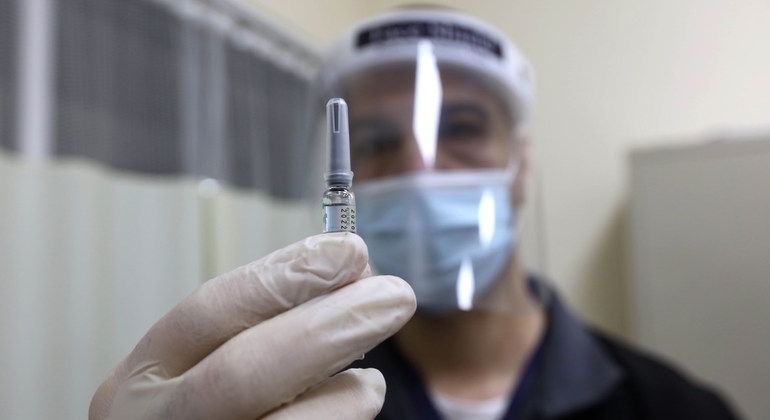The recommendation follows a four-day meeting of the Strategic Advisory Group of Experts (SAGE) on Immunization. A final report will be issued in December.
Risk of severe disease
SAGE said moderately and severely immunocompromised persons should be offered an additional dose of all WHO-approved vaccines “since these individuals are less likely to respond adequately to vaccination following a standard primary vaccine series and are at high risk of severe COVID-19 disease.”
People aged 60 and older who received the Sinovac and Sinopharm vaccines should get a third dose too, the experts added, though use of other vaccines may also be considered depending on supply and access.
“When implementing this recommendation, countries should initially aim at maximizing 2-dose coverage in that population, and thereafter administer the third dose, starting in the oldest age groups”, they said.
SAGE has also reviewed a vaccine developed by Indian company Bharat Biotech and will issue a policy recommendation after WHO greenlights it for emergency use.
Global vaccine strategy
WHO last week announced a plan to end the COVID-19 pandemic by ensuring all people, everywhere, have access to vaccines.
The Global COVID-19 Vaccination Strategy calls for inoculating 40 per cent of people in all countries by the end of the year, and 70 per cent by the middle of 2022.
The strategy takes a three-step approach to vaccination. Priority is given to older people, health workers and high-risk groups of all ages, followed by adults and then adolescents.
Historic malaria vaccine
SAGE together with another WHO advisory group on malaria also reviewed evidence on the world’s first malaria vaccine, which is geared towards children.
The experts recommended that the RTS,S/AS01 vaccine be used in areas with moderate to high transmission of the disease.
This follows an ongoing pilot programme in Ghana, Kenya and Malawi in which more than 800,0000 children were inoculated since 2019.
Malaria is transmitted by infected mosquitoes and can be fatal. Children under five are among those at higher risk of the disease.
In 2019, malaria cases stood at approximately 229 million worldwide, and roughly 409,000 deaths, according to WHO data. Children under five accounted for 274,000 deaths, or around 67 per cent.



